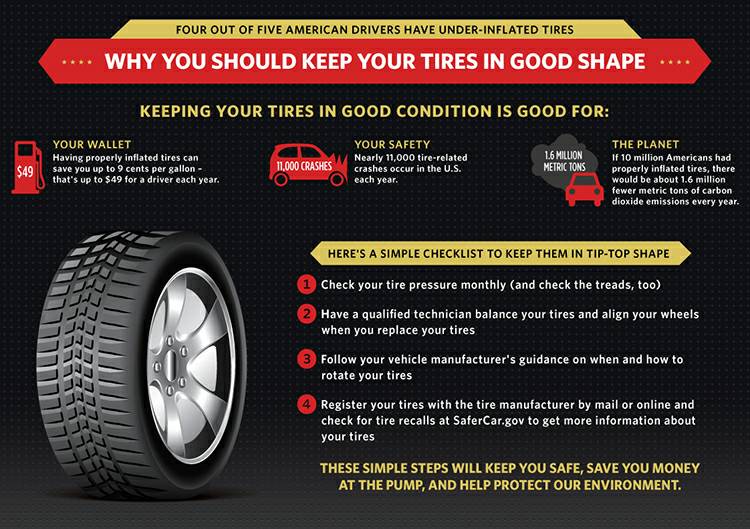| Tire Forge
When you buy tires, it’s not unusual to come across a pair that’s more or less over a year old.
But how old should new tires be when you buy them for your vehicle? And when should you decide that these tires are too old and you should consider an alternative?
As per the President of Safety Research & Strategies Inc., tires over six years old caused 233 fatal accidents in 2012.
So in today’s article, we’ll address all these questions and more concerns about choosing to buy old tires.
Page Contents
Now there’s an obvious alarm that old tires will lack in quality and functionality. That’s because the older a tire gets, the more its rubber deteriorates.
And this breakdown occurs even if the tire isn’t being used!
That’s because various factors cause a tire to decompose, mainly exposed to oxygen, light, and heat. So even if tire shops store their brand new tires in a temperature-controlled and dark area, it won’t stop the deterioration process since there’s still oxygen in the atmosphere!
But the main question is: how does this breakdown affect tire quality?
As the tire’s rubber compound breaks down, the tread starts to wear off, which significantly increases the driver’s chances of losing control of the vehicle and the tire blowing out.
Also, cracks begin to appear in the tire’s rubber, both on the surface and within the tire. These cracks ultimately cause the steel belts within the tread to detach from the rest of the tire. And as mentioned, exposure to heat accelerates this process.
How Old is Too Old for A New Tire?As mentioned earlier, tires older than at least six years potentially increase the risk of a fatal accident. And unfortunately, there aren’t any regulations preventing stores from selling these old tires – it is legal.
And unfortunately, there aren’t any regulations preventing stores from selling these old tires – it is legal.
That’s why it’s extremely important to carefully inspect the tires you are buying for your vehicle, or you might end up getting dangerous tires that will need replacing a few days or weeks later!
Here’s a tip: the fine print on most tire treadwear warranties states the mileage limit and how old they are.
But if you buy an old tire and find this out later, you can’t do much about it.
So, as a rule of thumb, and for your safety, you shouldn’t buy tires that are older than 18 months.
How To Tell How Old New Tires Are?Even though you can’t always trust tire sellers, there’s still hope for you when you buy tires for your car.
Tire Manufacturing DateTire manufacturers are required to print the date of manufacture on their tires, even the exact week. This date is generally printed on the tire’s sidewall, but if you aren’t aware of it, you probably won’t find it.
But don’t worry; we’re here to help.
Tires manufactured after 2000 have a four-digit DOT code. In addition, you will see many circled blocks on the tire’s sidewall. These blocks have different numbers and letters inside them.
Look for a circled block with four numbers inside it.
If you can’t find it, look for a circled block with a ‘DOT’ on it – the correct block is usually around this area.
Once you locate it, start by reading the initial two numbers. They represent the week of manufacture of the tire.
Then look at the last two numbers; they are the last two digits of the manufacturing year.
Here’s an example: if the number is 4708, it means the tire was manufactured in the 47th week of 2008.
Is it Safe to Buy Old New Tires?A major factor in determining the safety of old new tires and how long they will last is the environment that they are exposed to.
For instance, if you reside in a warmer climate and don’t pay attention to the maintenance of your tires, they are bound to wear out quicker.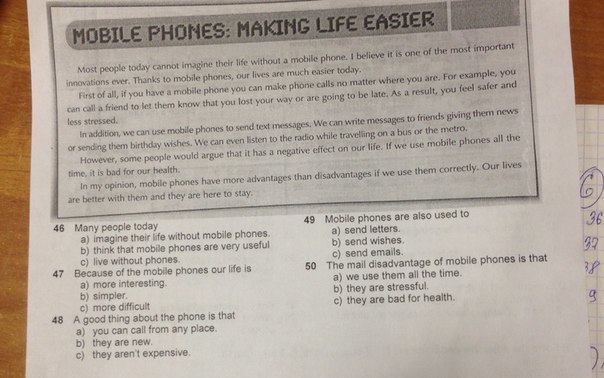
Hence it’s very important to keep the tires fully inflated throughout the year.
In terms of years, three-year-old new tires are considered safe.
However, that doesn’t give you the green signal to buy them since, after another three years, you’ll eventually need to replace these tires due to significant safety concerns.
Bottom line: when buying an old new tire, you can’t be sure of how well it was maintained and the conditions it was kept in.
You can determine its age as described above, but it’s an option better to avoid it completely.
Does an Unused New Set of Tires Become Unsafe on the Road?Unused new tires can last for about 6 to 10 years, depending on how well they were stored and the environmental conditions they were kept in.
Broadly speaking, the age limit for stored tires is more or less the same as for used tires.
However, official manufactures and the National Highway Traffic Safety Administration (NHTSA) claim that a tire can only be considered 100 percent safe to use till it turns 5 to 6 years old.
However, if checked regularly for issues after the 5th year, unused tires can be deemed safe to use for up to 10 years.
How Old Should New Tires Be When Installed?Most tires are less than a year old when they arrive at a shop. And the rubber compound immediately starts to deteriorate when they trundle off the manufacturer’s assembly line.
So as mentioned before, a tire must not be older than 18 months when you buy it for your vehicle.
Final ThoughtsUnfortunately, there is no protection or warning for customers purchasing an old new tire. So the best option to stay safe is to always check the tires’ age before buying it.
Also, remember to always check each tire individually – just because a single tire is newer doesn’t guarantee that all four will be as well!
Thanks for reading our article! We've written this article with a lot of thought and care. If you're interested in seeing more of our content, please check out our Tires section and find an answer to your questions!
If you're interested in seeing more of our content, please check out our Tires section and find an answer to your questions!
Tires have two seasonal sales peaks in the year. October is usually the start of the fall season sale promotion that encourages consumers to buy winter tires. Thankfully, San Antonio does not get blizzards or ice storms so winter tires don’t apply to us. However, new sale gimmicks are a good opportunity to inspect or replace the old tires on your vehicle.
When buying are a reminder to inspect your set of tires and according to our research there is one thing you must be aware of. As a consumer, you must be aware that the new tires you are buying are actually new and not unsold inventory. New tires that have been in storage for several years can unintentionally be sold to customers as brand new tires.
Buying new tires that are already 1-2 years old is sort of like buying food that is already near its expiration date. Plus, you run the risk of paying for old rubber.
Plus, you run the risk of paying for old rubber.
An old tire that has never been used can look exactly like a brand new one above. The tread is good, and the manufacture stickers may still be on it. When tires reach a certain age the rubber begins to dry out and crack. That can make it unsafe for road use because it may run the risk of blowing out, falling apart, or lose traction during bad road conditions. That is why one should know how to find the date a tire was made before having them installed on your vehicle.
So why isn’t this fairly common knowledge? Because tires don’t have expiration dates. Automotive experts at Edmund say that not even the National Highway of Traffic Safety Administration (NHTSA) has a specific guideline for tire aging. Every set of tires goes through a different lifespan so there is no way to calculate a general rule for how long a tire should be kept on the road.
When shopping for a new set of tires take a look at the tires themselves. You will notice that on the sidewall there are a series of numbers in front of the word “DOT.” That stands for the Department of Transportation and the numbers the follow are like the tire’s social security number. Those numbers tell you the size, manufacture code, where it was made, and there are two sets of numbers that tell you what week and year it was made. Those are the numbers you need to focus on, or ask an attendant to show you.
You will notice that on the sidewall there are a series of numbers in front of the word “DOT.” That stands for the Department of Transportation and the numbers the follow are like the tire’s social security number. Those numbers tell you the size, manufacture code, where it was made, and there are two sets of numbers that tell you what week and year it was made. Those are the numbers you need to focus on, or ask an attendant to show you.
For example, if you see the number 1214 that means it the tire was made on the 12th week of 2014. These numbers are usually the last four numbers on the DOT code. All tires made from 2000 to now have this number pattern. Tires made before 2000 have a different code, but any tire over 10 years old is not recommended for road use. They are too old.
Throwing away a spare tire that have never been used may look like throwing away money. Spare tires are meant to aid you for a short period of time and it is best practice to replace them when you purchase a new set of tires for your vehicle. We recommend you avoid the risk of driving with a 7-9 year old spare tire after experiencing a flat or blow out.
Spare tires are meant to aid you for a short period of time and it is best practice to replace them when you purchase a new set of tires for your vehicle. We recommend you avoid the risk of driving with a 7-9 year old spare tire after experiencing a flat or blow out.
In summary, when you go to a retail store to buy new tires you may actually be buying “new” tires that have been in storage for several years. As a consumer, you have the right to ask for the newest tires because that’s what you are paying for. Knowing how to figure out the age of a tire means being savvy about your purchase.
In any case, if your or a loved one has been injured in an accident Davis Law Firm is here 24/7 to listen to your case! Our team of legal representatives offer free consultation so there is zero risk in calling. Don’t let the negligent actions of others effect the rest of your life, call us today! (210) 444-4444
Consumer disputes over the age of tires have not subsided for several seasons. Buyers are excited that the warranty period for tires is limited to 5-6 years according to GOST, and after the expiration of this period, the rubber becomes unusable.
Buyers are excited that the warranty period for tires is limited to 5-6 years according to GOST, and after the expiration of this period, the rubber becomes unusable.
Is this really the case, read this article.
Manufacturers of most brands on their products set Shelf life is 5 years and service life is also 5 years .
The shelf life of a tire is the period during which it retains its performance when properly stored.
The end of this period does not mean that the tires have become unusable . A shelf life of 5 years is given by manufacturers because, by law, they cannot set a shelf life higher than the service life. Tires over 5 years of storage cannot be called damaged or defective, their technical characteristics may be slightly reduced. American researchers argue that the period of storage of "shoes" must be at least 10 years. Experts from Germany are sure that it cannot exceed 6 years.
The expiration date of tires is the warranty period during which the manufacturer is responsible for the quality and condition of the tire if it was used for its intended purpose without violating the operating rules.
According to Russian legislation (GOST 5513, GOST 4754-97) , the service life of tires is 5 years from the date of manufacture.
How can I find out the date of manufacture of tires?
You can find out the age of tires by a special DOT code. Tires manufactured after 2000 in the DOT code contain two pairs of numbers, where the first pair indicates the week number of the year, and the second pair indicates the year. Earlier tires before 2000 have 3 numbers in their composition, where the first two digits are the week number, and the last one is the year (see the transcript in the photo).
Determination of the average shelf life of a tire according to GOST and operating conditions.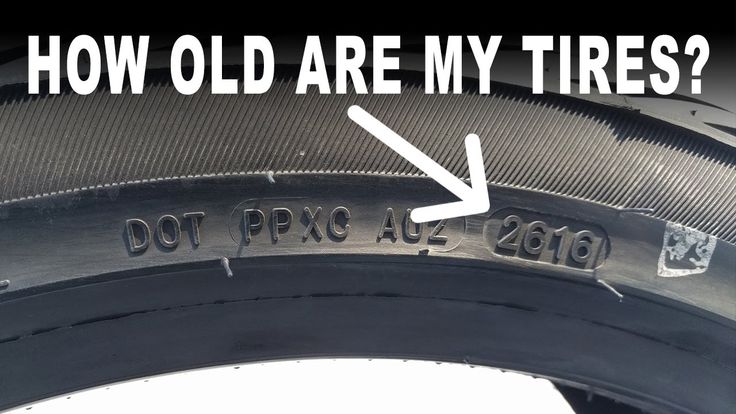
- The symbol ZR denotes tires for high-speed cars. They are recommended to be used at speeds over 240 km/h. up to 6 years
- Tires with the H symbol are used at a maximum speed of 210 km/h. within 5 years.
- The sign S symbolizes the maximum permissible speed of 180 km/h. and operational period of 4-5 years.
Most tire manufacturers do not agree that tire life is limited to 5 years. Each company has its own opinion on this matter. We analyzed several of them and the information they posted on their official websites.
Michelin
The French tire manufacturer Michelin has become famous for its active fight against the perception of the rapid aging of tires as a perishable product. Her information campaign "Tires Are Not Bananas" created a lot of noise in the automotive environment. According to the representative office, several test trials were carried out in Saudi Arabia, South Korea and Germany. As a result of testing, no difference was found between new tires and tires stored for 3 years. They were tested for various characteristics such as rolling resistance, high speed durability, etc. Tires with a year life were approximately equal in performance to 10-year unused tyres.
As a result of testing, no difference was found between new tires and tires stored for 3 years. They were tested for various characteristics such as rolling resistance, high speed durability, etc. Tires with a year life were approximately equal in performance to 10-year unused tyres.
Michelin focuses the attention of car owners on the fact that tires are not a perishable product, their shelf life is not as important as the service life is important, starting from the date the tires are installed on the wheels. It is from this moment that the tire is subjected to all tests: pressure, temperature changes, wear, contact with uneven and sharp coatings, etc.
Continental
On the Russian official website of Continental, we found the following information on the expiration dates of tires.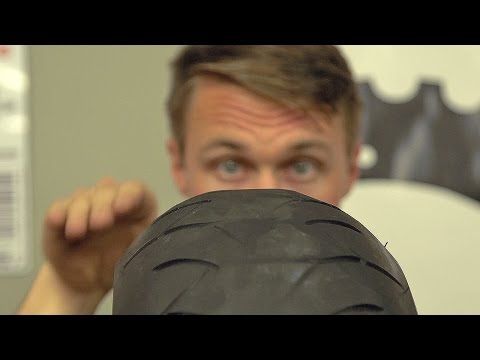
“When a tire is stored in the correct position and under the recommended conditions, it will not lose its original balanced performance for 5 years from the date of manufacture of the tire.
A properly maintained, unused tire less than 5 years old can be sold as a new tire and used normally.
Continental recommends replacing all tires (including spares) with a sidewall date greater than 10 years.
Nokian
The following information is posted on the Nokian official website:
“Tire life is not defined by law, but tires can only be considered “new” if they have been manufactured within the last five years. The recommended service life of tires is six years and the recommended maximum period is 10 years.
The opinion of our specialists, based on many years of experience, coincides with the opinion of manufacturers: the shelf life is 5 years + the service life is up to 10 years. Moreover, more "adult" tires, in our opinion, are of better quality.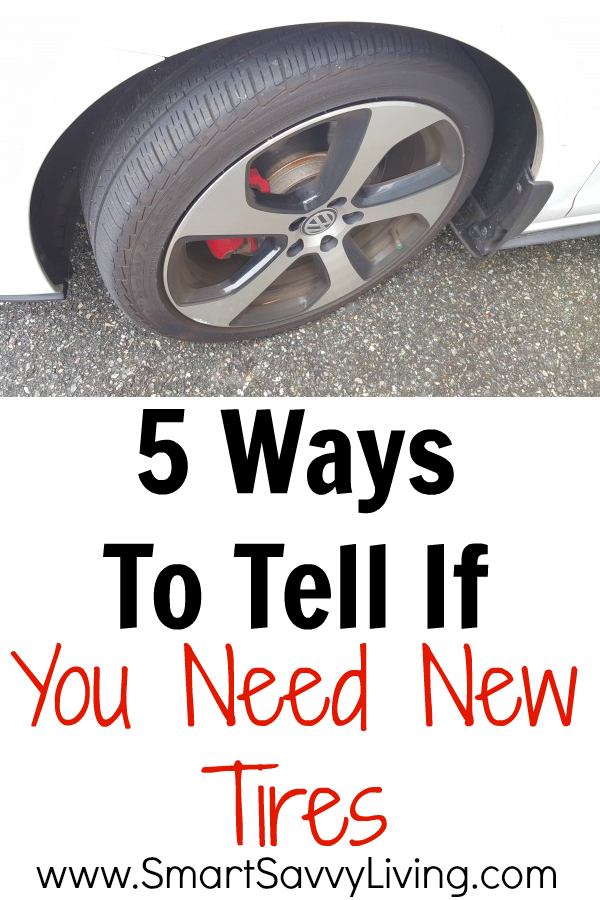
To keep tires as long as possible, they are stored in compliance with all rules and recommendations. The main condition is a cool, ventilated, darkened room away from oils, paints, ozone, and heat sources.
Rubber products tend to lose their performance over the years. To prevent and slow down this process, manufacturers add polymers to the rubber compound. They prevent oxidative processes that occur due to the interaction of protectors with oxygen and ozone.
The following are the main conditions for the proper storage of tires in accordance with GOST 24779-81:
Maintaining a constant regime without sudden jumps, slight temperature fluctuations from -30°С to +35°С are allowed;
Provide a low humidity level of 50-80% in a dry, ventilated cool room;
Avoid direct sunlight, use darkened hangars, shield heat sources;
Keep away from sources of heat;
Tires should not come into contact with corrosive, copper materials.
Avoid kinking, loading or positioning on an uneven surface.
Avoid contact with oils, organic solvents, acids, alkalis, fuels and lubricants on the tire surface. It is forbidden to lay tires on a wet and dirty surface.
In the warm season, when storing tires outside, they should be covered with light-tight material and raised above ground level to ensure ventilation and prevent the occurrence of the greenhouse effect.
Storage on reflective, light and heat absorbing surfaces is prohibited.
Keep away from chemicals, oils, paints, open flames, electric motors that produce ozone.
Used tires must be washed and dried.
Tires without rims should be stored upright.
The service life depends on many factors: the load on the car, the quality of the roads, the driving style, the distance traveled, tire damage, etc. To increase their service life, follow these rules:
To increase their service life, follow these rules:
Check tire pressure every 2-3 weeks. With reduced pressure, tire wear increases by the equivalent of a % reduction. For example, a 15% reduction in pressure can result in a 15% reduction in service life. Inflated tires are less scary.
The wear of the front tires is always significantly higher than the rear ones, so it is recommended to swap them after some time, carefully watching the direction of the tread pattern and the direction of rotation.
Proper alignment of tires in relation to rims. If the direction is not the same, then performance is significantly reduced.
To prevent damage to the sidewalls of tires, avoid close proximity to curbs and high ledges.
Wash off dirt from the surface of the rubber and from deep grooves with special cleaning agents.
Adhere to an even driving style without harsh brakes and quick starts.
Do not overload the car beyond the norm. 20% excess weight leads to a 30% loss of tire life.
Keep the wheels balanced and check the alignment angles annually.
The main condition for a long tire life is:
- high quality products,
- careful operation,
- proper storage of tires in the off-season,
- timely diagnosis.
The age of tires in standard storage is a minor non-determining factor that should not be taken into account when buying them.
Previous article Next article
Monday, November 21, 2016 03:12:13 PM Europe/Moscow
How to determine the date of manufacture of a tire and the necessary service life for its performance and functionality to be at the highest possible level?
When the minimum tread depth (4 mm for winter tires and 1.6 mm for summer tires) is reached, the tires are taken out of service and disposed of. As for the period of use over time, according to the recommendation of tire manufacturers, tires should not be used for more than ten years from the date of manufacture. At the same time, it is worth distinguishing between the concepts of "service life" and "manufacturing warranty period". The latter is established by law and in the Russian Federation is five years from the date of production. During the warranty period, the manufacturer is responsible for the full compliance of the tire with all necessary technical requirements.
As for the period of use over time, according to the recommendation of tire manufacturers, tires should not be used for more than ten years from the date of manufacture. At the same time, it is worth distinguishing between the concepts of "service life" and "manufacturing warranty period". The latter is established by law and in the Russian Federation is five years from the date of production. During the warranty period, the manufacturer is responsible for the full compliance of the tire with all necessary technical requirements.
The date of manufacture of a tire is one of the mandatory markings and is applied to one of the sidewalls of the tire in the lower part of it, next to the seat area for the disk. This marking is a set of four digits, where the first two digits are the week of production, and the last two are the year . For example, "4815" means that the tire was manufactured in 2015 at week 48. In some cases, the date of manufacture is included with an alphanumeric code that contains information about the place of manufacture of the tire, it is applied next to the DOT abbreviation.
In some cases, the date of manufacture is included with an alphanumeric code that contains information about the place of manufacture of the tire, it is applied next to the DOT abbreviation.
In summary, a tire is considered new and high performance if it has been manufactured for less than 5 years. And the opinion that you should only buy tires of the current year of manufacture is a delusion: tires are made in advance, before the start of the season. Thus, the tire that hit the shelf in the tire center in March 2017 will be produced in the second half of 2016, because it takes time to transport it, and if the tire is imported, it also takes time to go through the customs procedure. For your safety, choose certified tire centers for purchase, in which the tire storage process meets all standards and requirements. Tires must be used for no more than 10 years or to the minimum allowable tread depth in accordance with the season of use. In this case, the manufacturer bears its warranty obligations only during the first five years from the date of production.
Because the tire is constantly deformed during operation. All components of a car tire not only wear out from friction on the road surface, but are also exposed to the negative effects of sunlight, chemicals, etc. Thus, the general physical and chemical aging of the tire occurs. And if the level of physical tire wear can be assessed, then the consequences of changing the rubber structure due to aggressive environments and conditions are almost impossible for an ordinary driver to assess .
Structural changes to the tire can lead to poor grip on all surfaces, rapid wear, chipping, cracking of the tread and other negative consequences. The problems listed above are only consequences of tread “aging”, but it is worth remembering that the tire almost entirely consists of various rubber compounds, which are also subject to “aging” with subsequent deterioration in tire performance.
In this case, a completely new tread can be misleading about the quality of the tyre. The level of tread depth affects the ability of the tire to drain water, as well as the effectiveness of traction in snow or mud, but the tread has only a part of the functions. There is also rubber in the tire, as well as a rather complex internal structure. The latter just can get damaged (deformation, curvature) during tire storage for 5 years or more. This can lead to an imbalance that contributes to the car pulling to the side and even the complete destruction of the tire during operation.
MICHELIN, BFGoodrich, Tigar tire warranty is 5 years from the date of manufacture or until the minimum acceptable tread wear level is reached in accordance with the legal requirements in force in the territory of the Customs Union, subject to the rules of transportation, storage, operation, specified by regulations and the manufacturer for each tire model, whichever comes first.